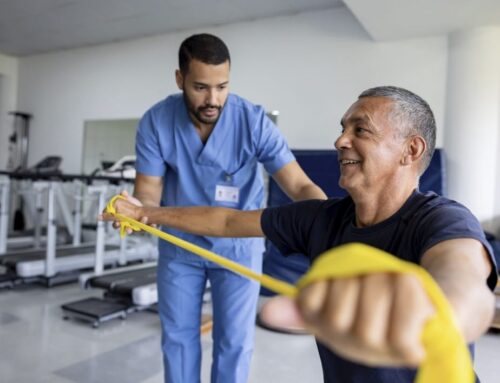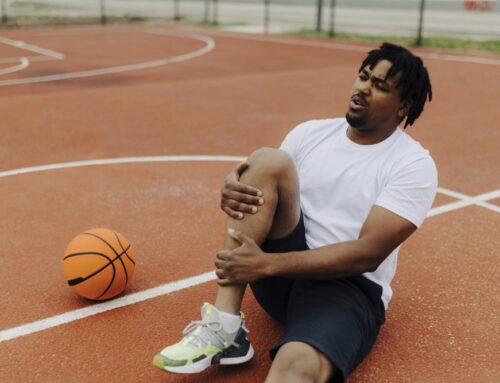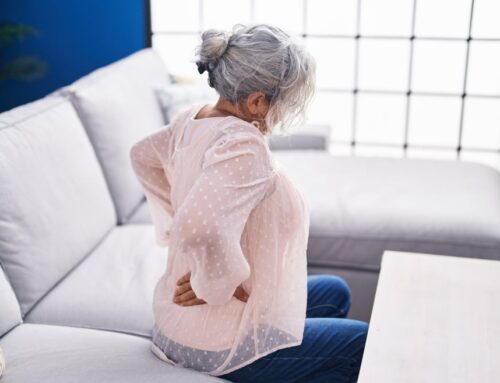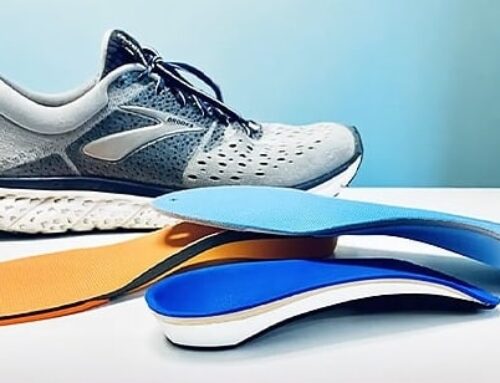Those who experience chronic joint stiffness and pain often have more severe symptoms as the cold, damp winter blows in. Although the correlation between weather conditions and joint pain is inconclusive, people with osteoarthritis often report worse joint pain in the winter when the weather is cold and rainy. In one survey, 67% of patients with osteoarthritis said they were weather-sensitive, and 30% said cold weather is the culprit.
While cold weather joint pain can occur in any part of the body, most patients complain of stiffness and achiness in their weight-bearing joints – the knees, hips and ankles. This is especially the case with runners and others who continue to exercise outdoors even when the temperatures drop.
Now that winter is upon us, our orthopaedic physicians offer these helpful tips for alleviating aching joints this winter.
Stay warm indoors and out
If cold weather exacerbates joint pain, it makes sense that warming the joints – and the body’s core – can serve to reduce pain. We recommend dressing for the outdoors in light but warm layers all winter long, but especially when exercising outdoors.
Opt for multiple fitted layers rather than heavy, bulky clothing. A snug fit helps to keep warm air close to the body. Choose fabrics that breathe and wick moisture away from the skin for your base layer and a medium-weight material like fleece for the second layer. Your outer layer should provide protection against wind, rain and snow. Keeping your core warm will promote blood flow to help warm your entire body.
Staying warm also means paying attention to your appendages. In North Carolina, where winters can be mild, many people overlook the importance of hats, gloves and thermal socks. These are critical to trapping heat in the body and maintaining circulation.
Soaking in a warm tub is another effective way to warm the core, relax your muscles and alleviate stiff and painful arthritis flare-ups in the winter.
Keep moving with regular exercise
Staying active is a key strategy for preventing joint stiffness. Regular exercise has all sorts of positive benefits for osteoarthritis patients, as well as for everyone! Movement increases blood flow and provides nutrients to the painful areas, lubricates the joints with synovial fluid, and removes toxins from the body. Regular activity also helps keep your weight in check to prevent added stress on already painful joints, like the knees and hips. Read more about the benefits of exercise for osteoarthritis from the Arthritis Foundation.
If it’s too cold to exercise outdoors, move your workout indoors. With continued social distancing recommendations, now is a great time to try an online fitness class. If you haven’t been active in recent months, start with a relaxing class, like these gentle yoga classes offered online by Blue Lotus Yoga in Raleigh. If you’re looking for a more intense workout, Core Fitness has a variety of “virtual” fitness classes.
Try physical therapy
A good physical therapist can help you increase mobility in your joints and reduce achiness. He or she will work with you in a safe medical environment, providing deep tissue massage, electric stimulation and other proven therapies, as well as show you at-home exercises to reduce pain during the cold winter months ahead.
Cary Orthopaedics Physical Therapy has three Triangle locations and can schedule quick, convenient appointments to meet your needs.
Consult your orthopaedic specialist
These tips should help to mitigate arthritis flare-ups, but if joint pain persists this winter, you can always turn to our orthopaedic doctors for more aggressive treatment options. We offer comprehensive diagnostics to assess your condition and a wide range of treatments, including anti-inflammatory injections and stem cell therapy. Our ortho specialists can guide you in managing your painful joints during the cold-weather season and year-round.






